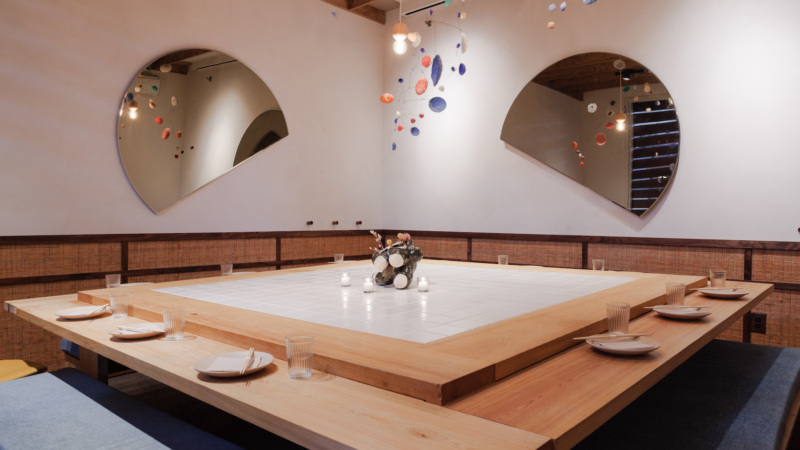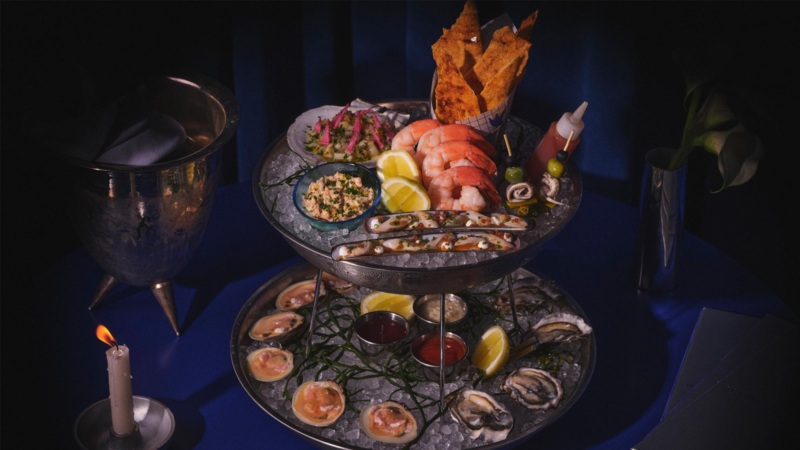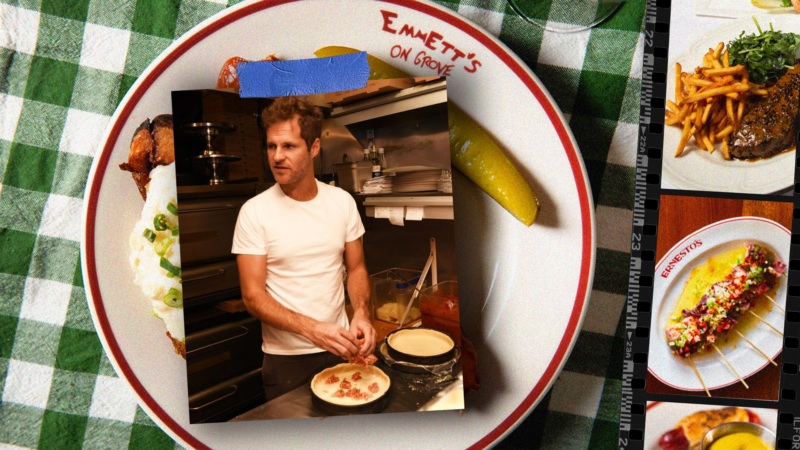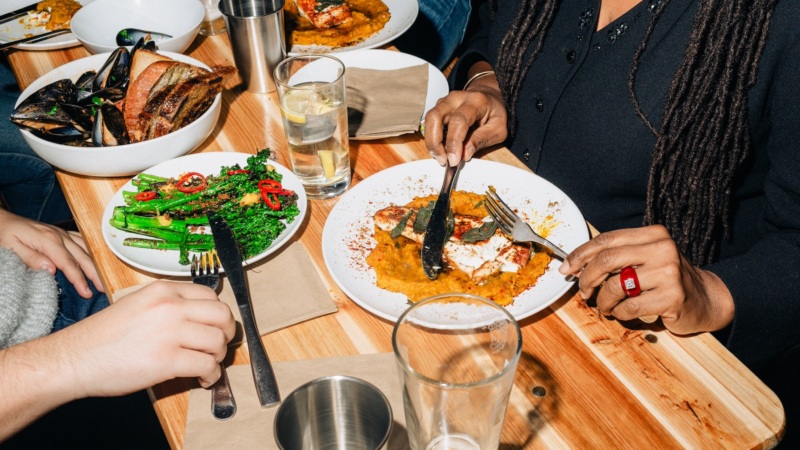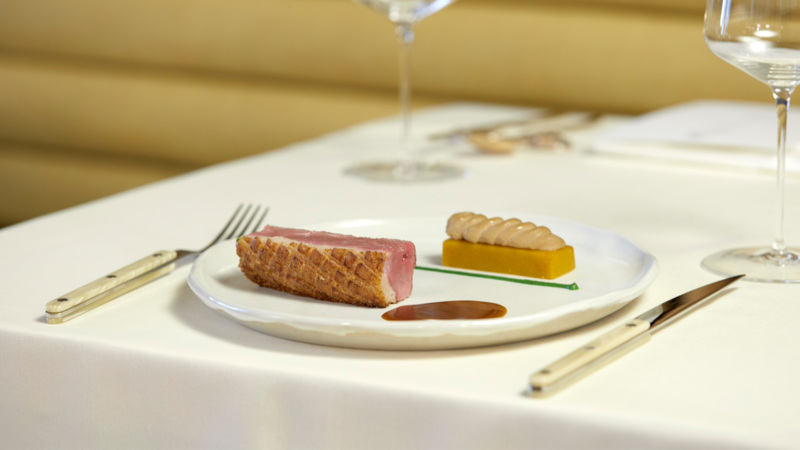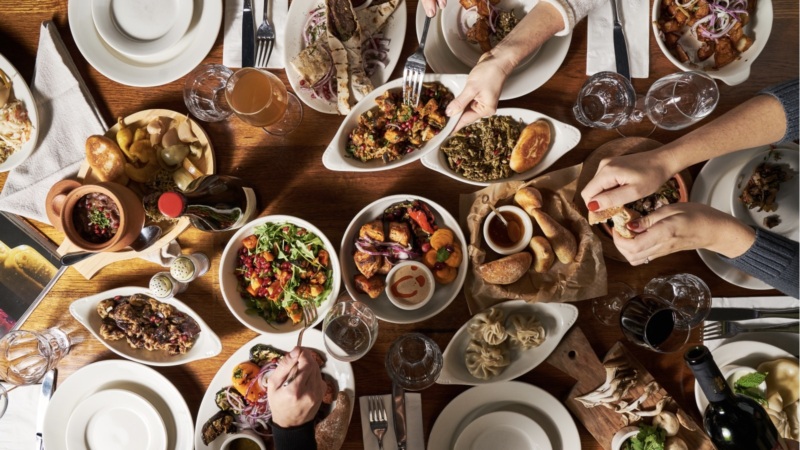
Saint Julivert Fisherie and Its Playful Charms, In Five Dishes
Years later, what first began as the small coffee shop Tekoá in 2016 is now a community anchor — a seafood-focused bistro and wine bar — that continues to change and evolve.
Chef-owners Alex Raij and Eder Montero first debuted Saint Julivert Fisherie in the fall of 2018, on a leaf-covered street in Cobble Hill, Brooklyn, right next door from La Vara, their Southern Spanish restaurant. Together, Raij and Montero have helmed a number of different restaurants throughout the city, including Txikito, a beloved Basque restaurant in Chelsea scheduled to reopen sometime this year, and the now-closed tapas bar El Quinto Pino. Tekoá eventually became Pilar, a seafood restaurant, which later became Saint Julivert Fisherie.
Over the years, Saint Julivert Fisherie has changed with the times, but one constant Raij has maintained for it is a desire to create a sense of community and camaraderie in the space. Sitting in the restaurant and looking out onto the windows, it’s not uncommon for Raij to wave hello at her neighbors.

“I want people to walk in, come to the bar and have a drink, a dish, and maybe talk to the person next to them,” says Raij. “I wanted to reflect this idea of a jewel box.”
The wine bars of Paris also influenced her when it came time to naming the restaurant. “The name is a nod to Ruth Reichl’s review of Clamato in Paris, where she describes the Parisian fishmongers as a “little fisherie,” Raij says. “I called Ruth and asked if it would be OK to use ‘fisherie’ as a reference to her. She said, ‘Yes.’ So that’s where ‘fisherie’ comes from … It gives a visual sense of the size and the petiteness of it.”
In October, Saint Julivert Fisherie finally reopened its doors to diners. For most of the pandemic, the restaurant operated as a takeaway spot and general store where you could purchase conservas and wine. The pandemic gave Raji and Montero time to think about what changes they’d want to make to the menu and the restaurant itself.
During this period, Raij still was sourcing seasonal and local produce from farmers markets. “It got to this point where I felt so connected to the season but also to the micro changes from farmer to farmer,” she says. Now that it’s fully reopened, Raij has given the restaurant an entirely new wine list and a re-envisioned menu that takes into account all those seasonal shifts. Longtime diners can take a sigh of relief knowing the hamachi collar, whipped mackerel, and spicy peanuts made the transition over. As for the rest of the dishes, they’ve been given a makeover, along with a revamped interior to match. Here, she takes Resy through a deep dive of five new dishes on the menu.
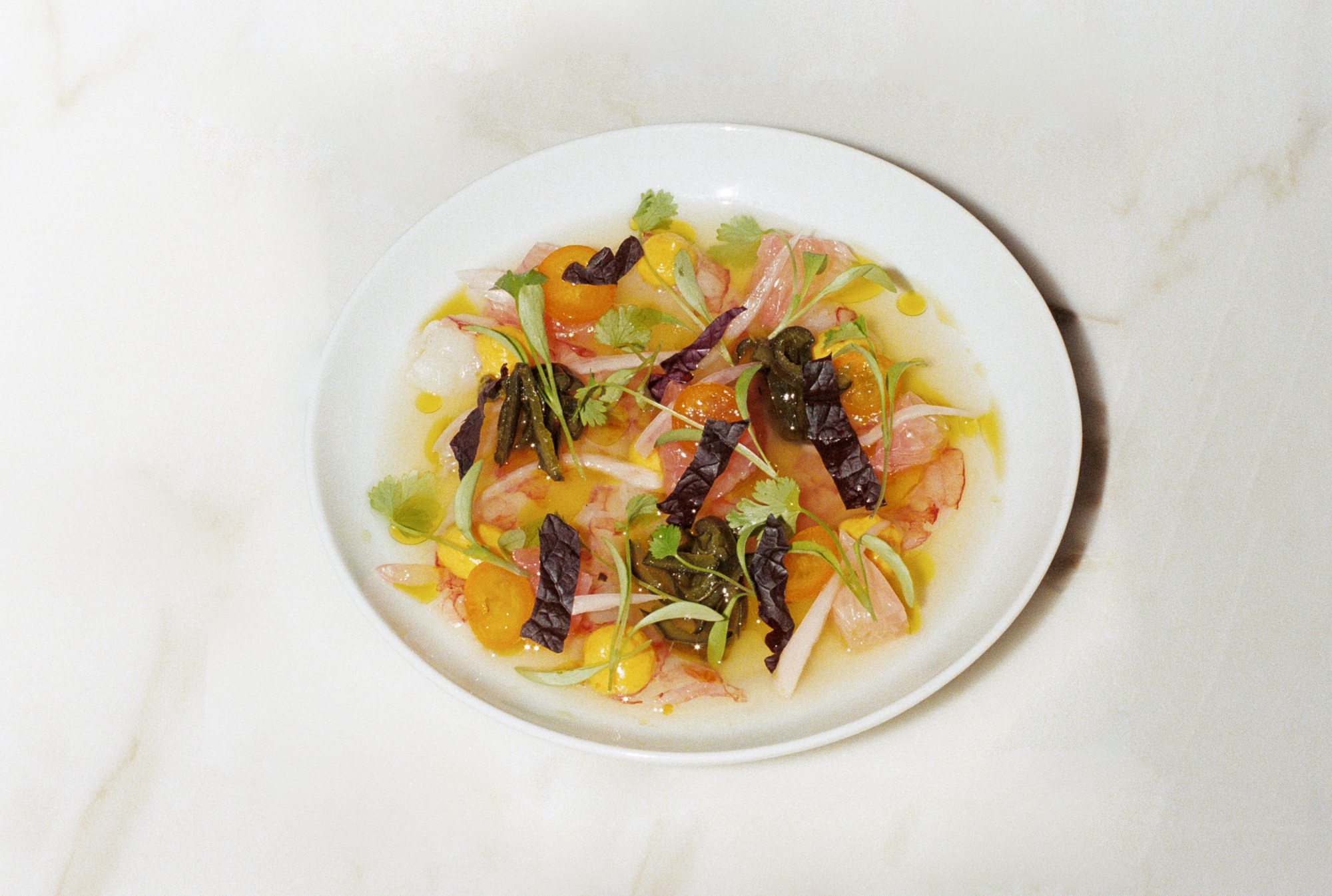
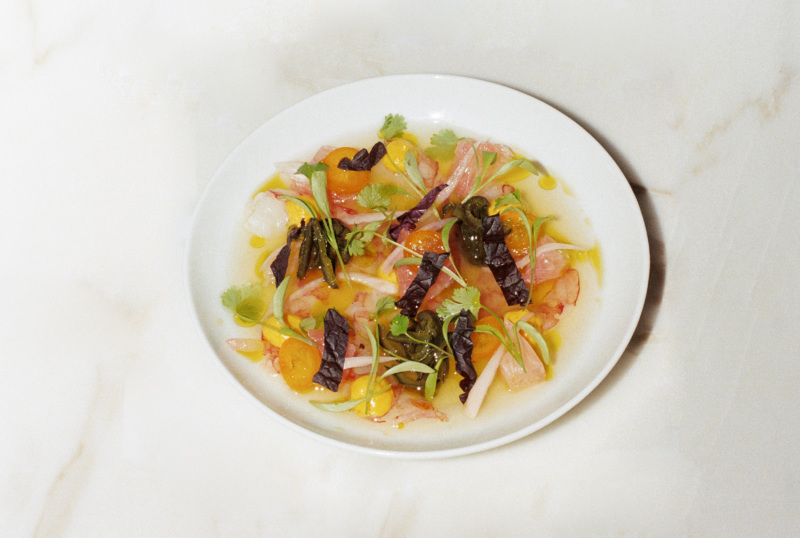
1. Wild Shrimp
(Cured raw, salted kumquat, poblano pepper)
“The wild shrimp was something that came out of when we first served pickled shrimp with fried saltines. We wanted a fresh start to the dish, and we decided to cure it instead of cooking it. Curing it gives it more texture.
It sits in a kumquat bath garnished with big chunks of pomelo. The shrimp is really supple and velvety, while the pomelo pulp explodes. The kumquat juice we get from candying kumquat for a dessert at La Vara ends up going into the vinaigrette, so it’s vibrating on levels of citrus.
Kumquats are a very nostalgic ingredient for me. My parents are from Argentina, and in Argentina, we call them quinotos. My grandfather’s favorite thing was candied kumquats, and everyone in my family makes them in the wintertime.
Then there are the shiso leaves and poblano peppers; that’s part of my pepper mission. The poblano peppers are completely transformed because we dehydrate them and put them in oil. The oil becomes spicy, and we use the oil on top [of the dish]. To us, it’s like the pickled shrimp had a baby with the shiso tacos from La Vara.”
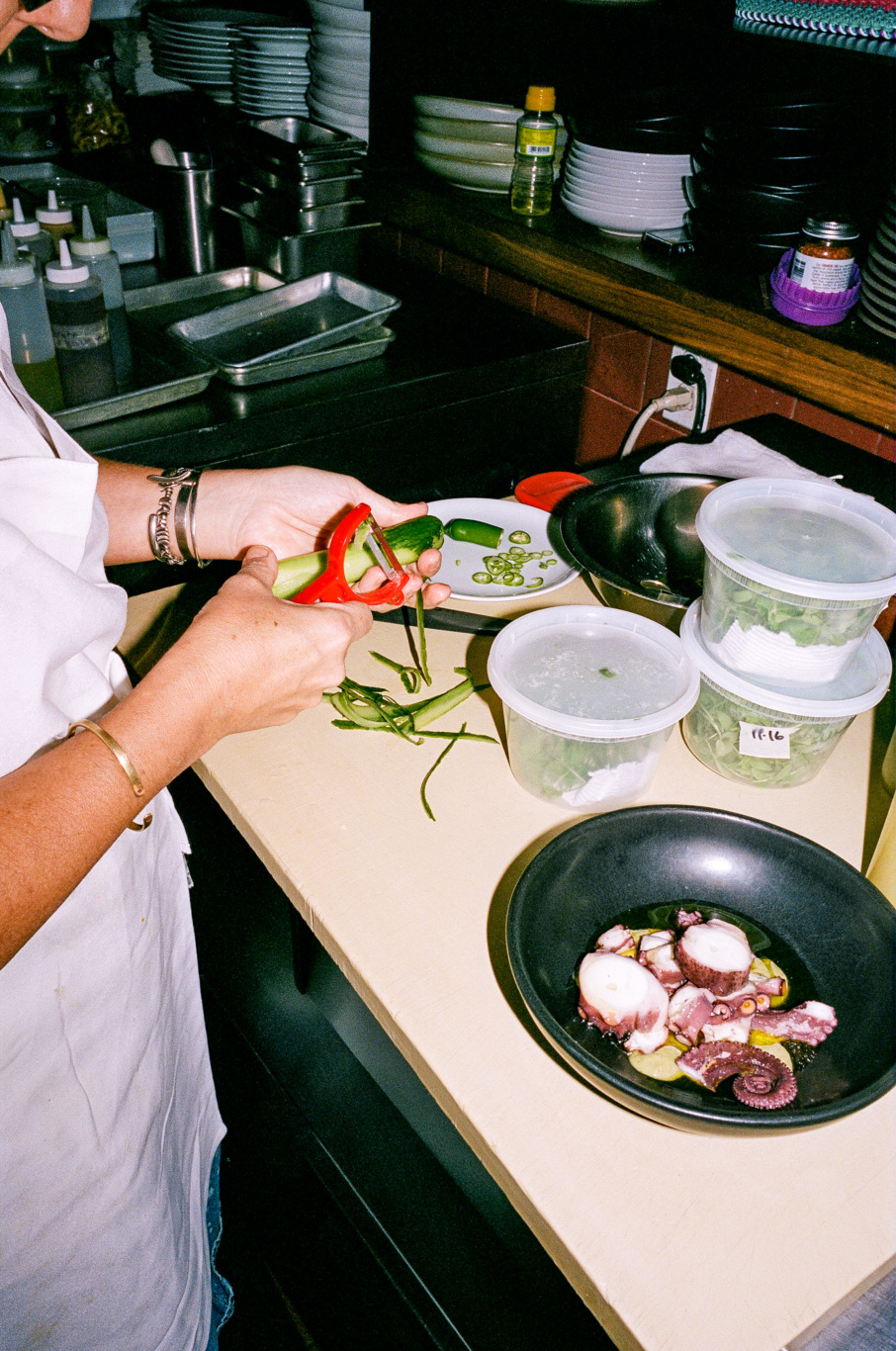
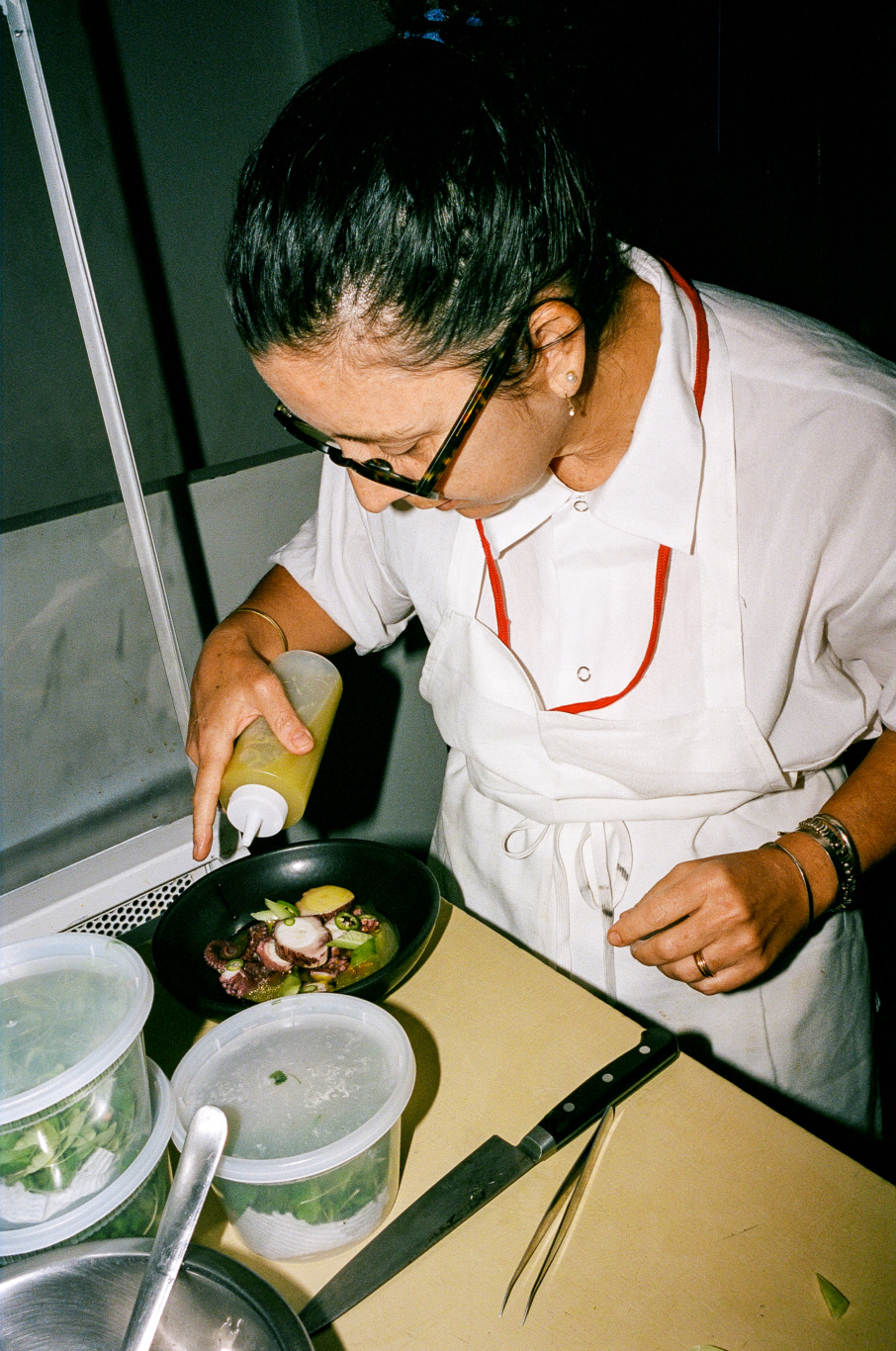
2. Octopus
(Pipian verde, roasted tomatillo juice, cucumber, serrano)
“We slay octopus. That’s what we do. We always have. The octopus is poached, which to me is the best way to prepare octopus. Octopus has these great nuanced flavors of the sea, and it holds sea salt in a way that other critters don’t.
The deciding element of this dish was the tomatillo juice. We ordered a bunch of tomatillos from a farm in Massachusetts, and we just couldn’t believe them — we’ve never had tomatillos like this before. I roasted them and took only the juice. It was so disorienting that I just wanted to share it. We candied the [leftover] tomatillo and made a garnish for a dessert at La Vara.
The sauce is pipian verde, which is a green sauce predominantly made of local pepitas or squash seeds. Sourcing is a huge thing for us. We use serrano peppers to add heat to the pipian. It’s also thinly shaved raw on top to remind you of what’s going on in the sauce underneath. It has elements of a Mexican aguachile with chile peppers and diced cucumbers, which are a fresh point, finished with some baby cilantro, which actually has a lot of flavor and is a bit citrusy.
What’s so beautiful about this dish is it has all the priorities of bettering our octopus game while simultaneously reflecting two key features — it needs to feel dressed but naked. Everything I knew about octopus I learned by eating Galician-style octopus and then reverberating that through the nakedness of how octopus might be served in a Japanese restaurant.”
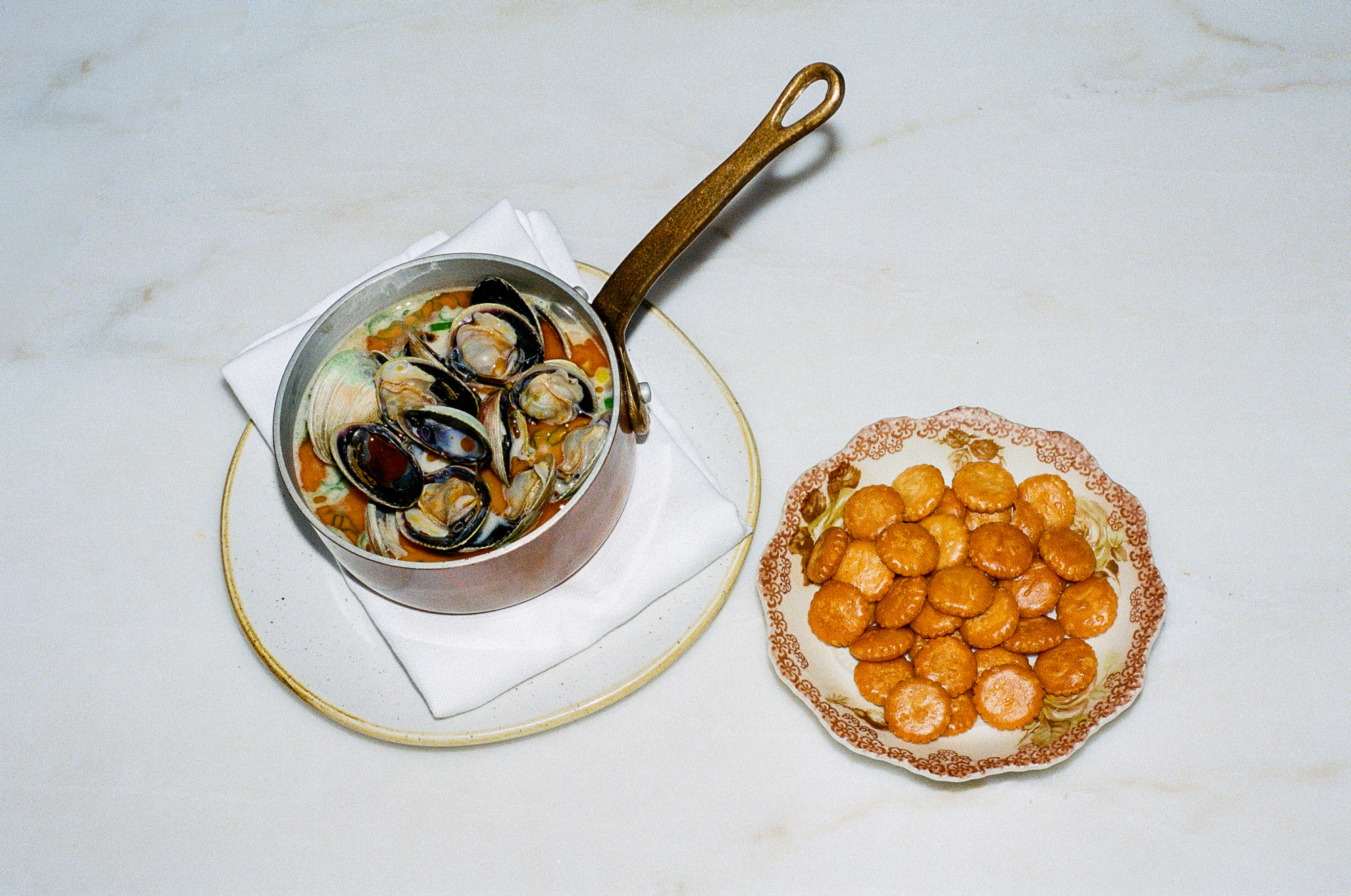

3. Clams
(Braised manilas, bacon-coconut broth, Calabrian chile oil, oyster crackers)
“The clams were born out of the takeaway concepts. I wanted to have a cozy Italian seaside dish because we’ve always had these warm seafood stews. In my mind, I wanted a clam dish. When COVID happened, we started making outstanding soups that we were so proud of. One of the soups was this corn soup with shrimp; I was going for a chowder [with that one].
It also happened that the supply chain was so messed up that a cold storage warehouse [nearby] was closing, and giving away hundreds of pounds of slab bacon. I had friends that were doing relief work, so I took a ton of bacon for my friend, and he saved lives with that bacon. I took maybe 40 or 50 pounds, and that’s how the bacon got in the soup.
I made this seafood corn chowder, and I finished it with the smallest amount of coconut milk, and it was such a revelation. I was like, oh my God, this might be the best thing I’ve ever made. That’s where the foundation for these steamed clams came from, and we serve them with little fried oyster crackers. It really harkens back to this idea of a chowder base dish.”

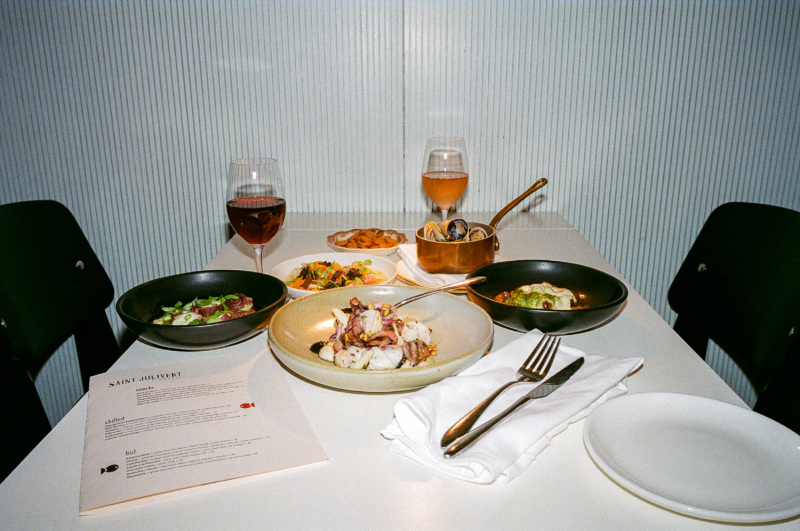
4. Squid a la Plancha
(Pine nut, matsutakes, squid ink)
“This dish is super important. It’s a dish that’s been in the making for 19 years. One of the signature dishes at Txikito is chipirones encebollados (baby squid with onions). It is a very traditional Basque dish, but the way that we make it is not traditional whatsoever. This dish pays homage to the chipirones encebollados and is all the respect that Txikito’s version never got. It is a revision and a reclamation.
It has local squid, perhaps the most important ingredient in our repertoire. Our version has a lot of pine nuts in it. We puree the pine nuts. But if any Basque person, whether they were 90 or 19, came into the restaurant, they would automatically understand what dish they were eating, and they would also be very surprised by it.
Before, we only used the bodies [of the squid]. What’s unique here is that we’re using the squid wings, which had been [food scraps] for us up until recently. Then there’s a squid ink sauce and a green pepper sauce made from poblano and padron peppers. The stars aligned when we were preparing to open this restaurant, and it was going to be matsutake season.
It is a dish that is so perfect on so many frequencies. It has perfect flavors, perfectly married, perfect textures. When the squid is ‘a la plancha,’ it has that kind of snap to it and a milder deliciousness that the matsutake does too. They’re all on the same wavelength. It’s quiet, soft, and beautifully flavored. All the ingredients that you’re looking at, you can see everything, but it’s still hyper-surprising.”
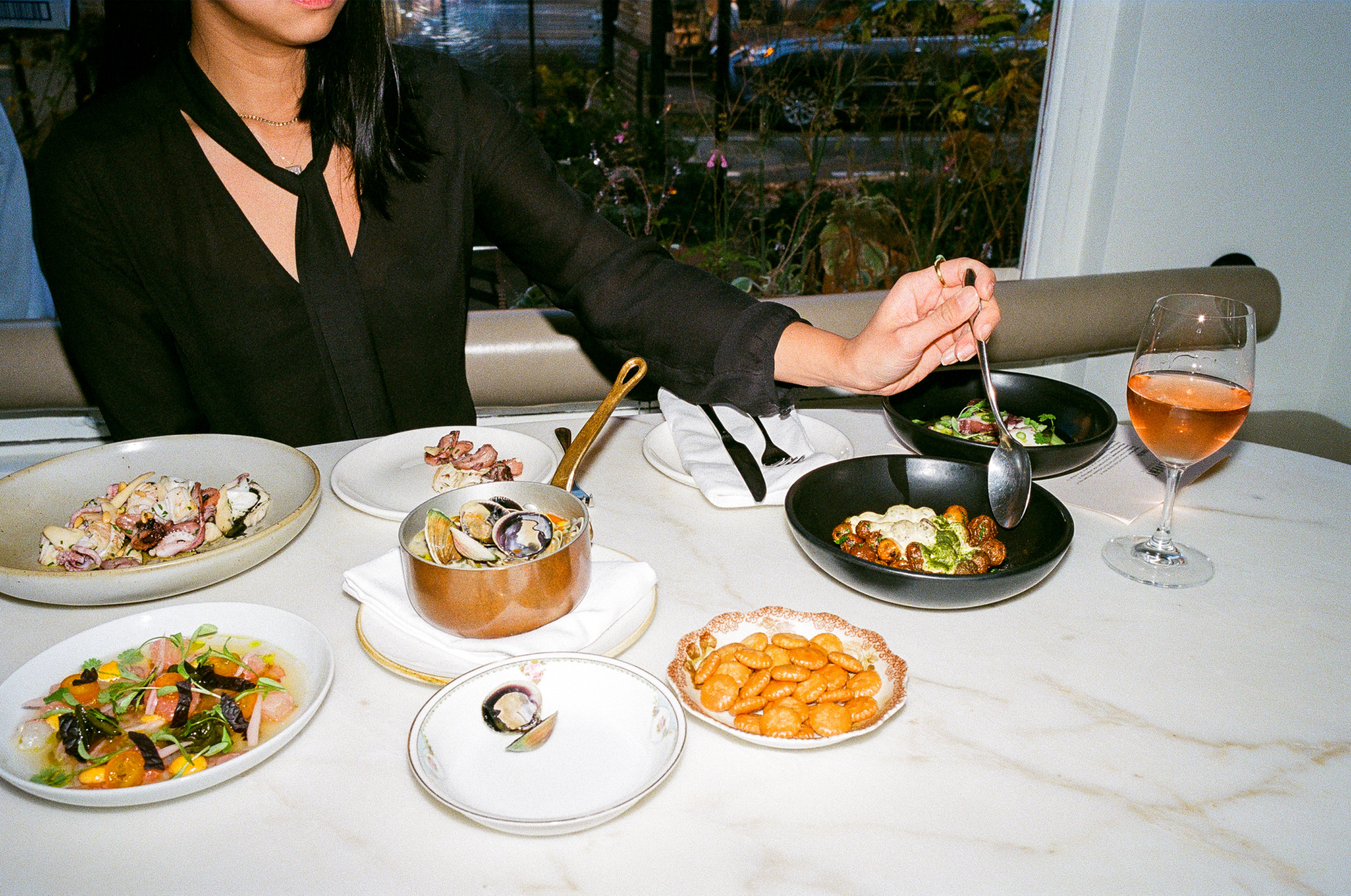
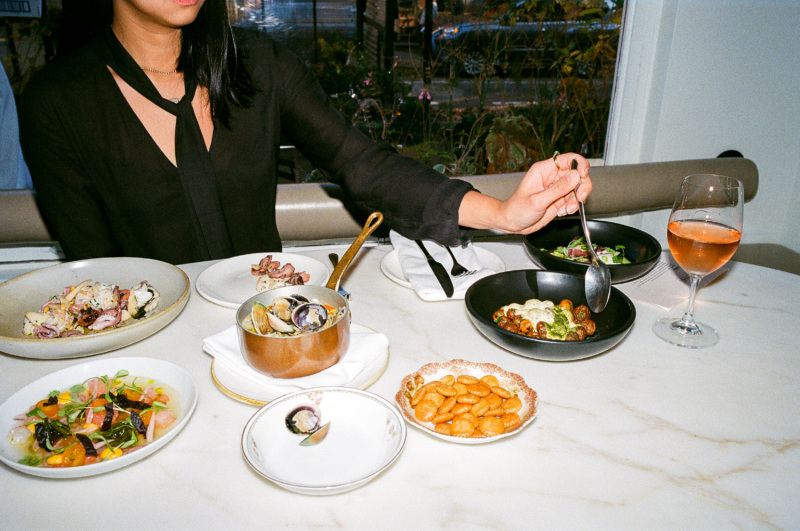
5. Papa Amarilla
(Confit of papa amarilla with sauce choron)
“Papa amarilla is a low-starch, higher-protein potato from Latin America. My dad’s dad was a potato farmer, so I grew up not liking potatoes very much because they were on the table often. So, when I found this potato, I fell in love with this potato. The papa amarilla is bright yellow inside, and the skins are very umami-driven. All potato skins have so much flavor. We cook really spontaneously, and we revise things seasonally.
For this new version, we twice-cook them, confit then fried, and top them with sauce choron, a variation of Hollandaise sauce. It has lots of lemon, hot sauce, and our homemade tomato paste. The tomato paste is made from slow-dried plum tomatoes emulsified with olive oil and garlic for a deeply complex flavor that has great acidity and umami. We then dust them with dried tarragon. They are like the French response to patatas bravas by way of Peru.”
Saint Julivert Fisherie is open nightly, seven days a week from 5 to 9:30 p.m.
Annie Lin is a New York City-based writer specializing in food, lifestyle, and hospitality. Follow her on Instagram and Twitter. Follow @Resy, too.




